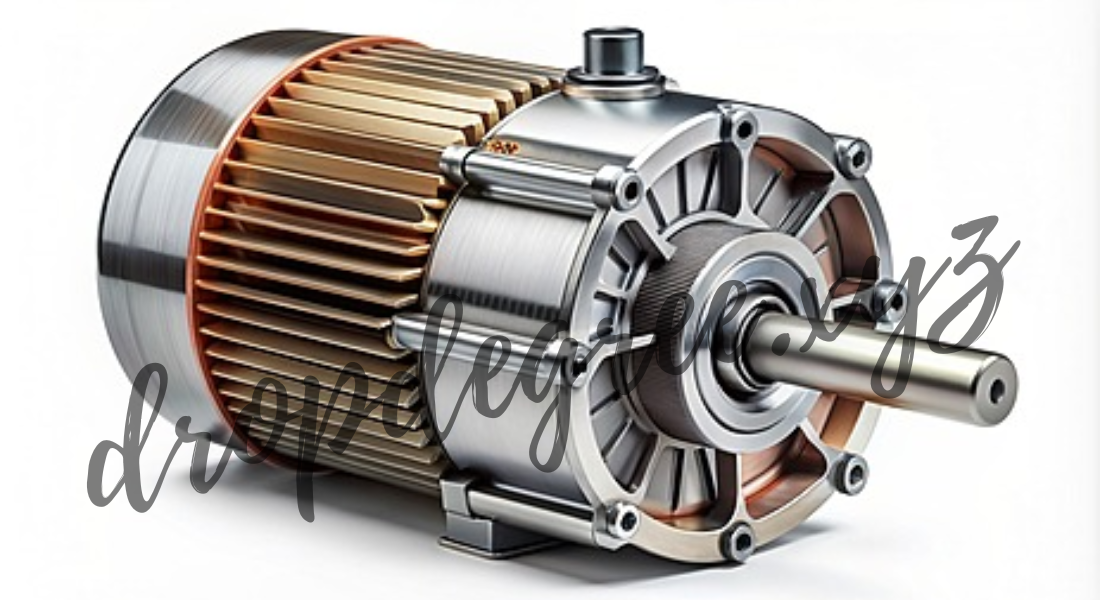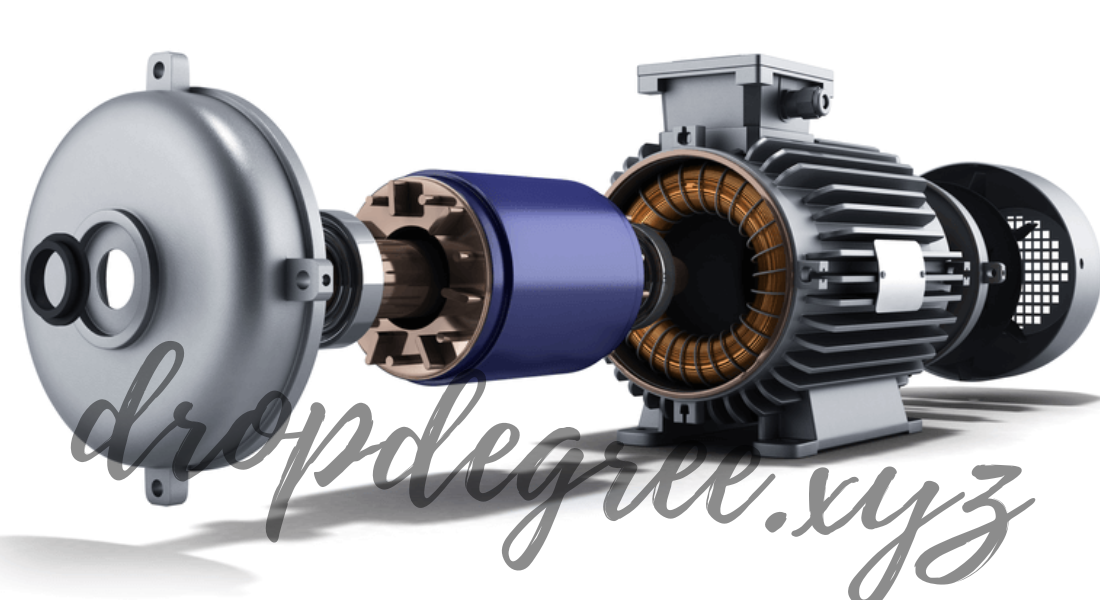Electric motors have revolutionized how industries operate, how vehicles move, and even how home appliances function. These powerful machines transform electrical energy into mechanical energy, providing a reliable and efficient source of power. As industries and consumers look for sustainable, efficient solutions, electric motors are emerging as essential components in technology, manufacturing, and beyond. This article will delve into various applications of electric motors, exploring how they impact different sectors and contribute to a more sustainable future.
Understanding the Basics of Electric Motors
Electric motors work by converting electrical energy into mechanical motion. They operate based on electromagnetic principles, where an electric current flowing through a wire coil creates a magnetic field, causing a rotor to spin. This spinning movement can then power different types of machinery and devices. Motors come in various forms, including alternating current (AC) and direct current (DC) motors, each with specific applications tailored to their unique properties.
Electric Motors in Industrial Applications
In the industrial sector, electric motors power essential machinery that drives production processes. They are widely used in manufacturing plants for applications like conveyors, pumps, compressors, and fans. Electric motors are critical to maintaining efficiency, reducing downtime, and minimizing energy consumption. AC motors, known for their durability and high torque capabilities, are commonly used in heavy-duty applications, such as in large-scale machinery and equipment in automotive manufacturing, steel production, and food processing. DC motors, with precise control, are typically used in applications requiring speed and position control, like robotics and automated machinery.
Electric motors’ efficiency and reliability are particularly valuable in industries where productivity and cost control are vital. By reducing the dependency on fossil fuels, electric motors also contribute to environmental sustainability.
Transportation and Electric Vehicles
The transportation industry has seen a significant transformation with the introduction of electric vehicles (EVs). Electric motors are at the heart of EVs, replacing internal combustion engines in cars, buses, and even bicycles. Unlike traditional engines, electric motors produce zero emissions, making them ideal for reducing air pollution and greenhouse gases. Furthermore, electric motors provide instant torque, allowing EVs to accelerate quickly and operate quietly.
In addition to personal vehicles, electric motors are used in public transportation. Electric buses, trains, and even some planes rely on electric propulsion systems to reduce environmental impact and fuel costs. These motors also contribute to the rise of autonomous vehicles, where precision and reliability are paramount.
Electric Motors in Household Appliances
In our daily lives, electric motors power a wide range of household appliances, from washing machines to air conditioners. These appliances make life more convenient and efficient, but their reliance on electric motors often goes unnoticed. The versatility of electric motors allows for various household applications, providing the ability to automate repetitive tasks and reduce physical strain.
For example, the motors in washing machines handle heavy loads while adjusting speeds and cycles to optimize cleaning. Vacuum cleaners, powered by electric motors, create suction and facilitate dirt removal. Other appliances, such as refrigerators and fans, rely on electric motors to maintain cooling systems and circulate air.
Renewable Energy and Electric Motors
Renewable energy applications are becoming increasingly important as the world transitions toward sustainable energy sources. Electric motors play a vital role in wind and solar energy systems. Wind turbines, for example, use electric motors in their design, which enables the conversion of wind energy into electrical power. Solar energy systems also utilize motors for tracking systems, allowing solar panels to adjust position and maximize sunlight exposure.
The integration of electric motors in renewable energy systems improves efficiency, reliability, and adaptability. As technology advances, electric motors’ role in energy solutions will likely expand, contributing to a greener and more sustainable future.

Medical and Healthcare Applications
The medical and healthcare industry relies heavily on electric motors for precise and reliable performance. Medical devices such as ventilators, imaging machines, and surgical equipment depend on electric motors for consistent operation. Ventilators, for instance, use motors to regulate airflow for patients, providing essential life support.
Electric motors are also used in diagnostic equipment, such as MRI and CT scanners, which require high precision and control. Medical laboratories utilize electric motors in equipment like centrifuges, ensuring consistent sample preparation and analysis. With advancements in motor technology, electric motors are becoming quieter, more compact, and more efficient, making them well-suited for modern medical equipment.
Aerospace and Defense Applications
The aerospace and defense sectors require motors that offer high reliability and performance under extreme conditions. Electric motors are used in applications ranging from aircraft engines to drones and robotic systems. Electric propulsion is gaining attention for its potential to make air travel more sustainable, with concepts like electric aircraft promising zero-emission flights.
In defense, electric motors are used in various vehicles and robotic systems. Drones, for instance, rely on lightweight electric motors to achieve precision control, while military robots use electric motors for movement and manipulation. The precision, reliability, and efficiency of electric motors make them indispensable in aerospace and defense, where safety and performance are critical.
Robotics and Automation
Robotics is an area where electric motors are essential. Industrial robots rely on electric motors to perform tasks with precision and efficiency, whether in automotive assembly lines, electronics manufacturing, or packaging. Motors in robotics provide the power needed for movement, lifting, and rotation, allowing robots to perform complex tasks and repetitive actions with high accuracy.
In addition to industrial robots, electric motors are used in consumer and service robots, including home-cleaning robots and automated guided vehicles (AGVs). These motors enable robots to navigate spaces, handle objects, and perform tasks autonomously. With the ongoing trend toward automation, electric motors will continue to play a key role in advancing robotics technology.
Future Trends in Electric Motor Applications
As technology evolves, electric motor applications are expected to expand and diversify. Innovations in materials, such as the use of lightweight composites, are making electric motors more efficient and compact. Advances in energy storage, such as high-capacity batteries, are also enabling electric motors to power devices and vehicles for extended periods.
Moreover, electric motors are being integrated with smart technologies, allowing for real-time monitoring, predictive maintenance, and improved energy management. The integration of artificial intelligence and IoT with electric motors promises even more efficient and intelligent applications across industries.
Conclusion
Electric motors are integral to modern technology and society, powering applications in industries, transportation, healthcare, renewable energy, and more. Their ability to provide reliable, efficient, and sustainable energy has made them essential in addressing the demands of contemporary life and the need for environmentally friendly solutions. As electric motor technology continues to evolve, it will likely lead to even more innovative applications, transforming how we live, work, and interact with the world around us.
